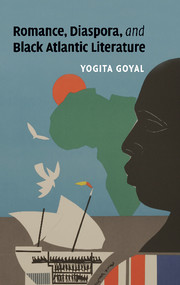Book contents
- Frontmatter
- Contents
- Acknowledgements
- Introduction: the romance of diaspora
- 1 From domestic allegory to imperial romance: Pauline Hopkins and racial mixture
- 2 From double consciousness to diaspora: W. E. B. Du Bois and black internationalism
- 3 From nativism to nationalism: Joseph Casely Hayford, Chinua Achebe, and colonial modernity
- 4 From romance to realism: Richard Wright and nation time
- 5 From revolution to arrested decolonization: Ama Ata Aidoo and the long view of history
- 6 From return to redemption: Caryl Phillips and postcolonial hybridity
- Notes
- Index
4 - From romance to realism: Richard Wright and nation time
Published online by Cambridge University Press: 04 August 2010
- Frontmatter
- Contents
- Acknowledgements
- Introduction: the romance of diaspora
- 1 From domestic allegory to imperial romance: Pauline Hopkins and racial mixture
- 2 From double consciousness to diaspora: W. E. B. Du Bois and black internationalism
- 3 From nativism to nationalism: Joseph Casely Hayford, Chinua Achebe, and colonial modernity
- 4 From romance to realism: Richard Wright and nation time
- 5 From revolution to arrested decolonization: Ama Ata Aidoo and the long view of history
- 6 From return to redemption: Caryl Phillips and postcolonial hybridity
- Notes
- Index
Summary
Tradition is no longer a guide.
Richard Wright, “Blueprint for Negro Writing”On March 6, 1957, the day of Ghana's independence from colonial rule, Kwame Nkrumah declared that “from now on there is a new African in the world and that new African is ready to fight his own battles, and show that after all, the black man is capable of managing his own affairs.” Not content with representing the aspirations of four and a half million Ghanaians alone, Nkrumah went on to say “We again rededicate ourselves in the struggle to emancipate other countries in Africa, for our independence is meaningless unless it is linked up with the total liberation of the African continent.” Ghana took its name from an ancient West African kingdom, but the new nation as it was imagined by Nkrumah was resolutely transnational and pan-African in scope. The black star at the center of Ghana's flag paid tribute to Marcus Garvey's dreams of a black nation, functioning as a reminder that Nkrumah's vision encompassed all African-descended peoples. As the first sub-Saharan African nation to gain independence from colonial rule, Nkrumah's Ghana transformed the familiar Afrocentric slogan to the new one, “Africa for Africans at home and abroad.” The moment of decolonization in Africa, then, was one of promise and exhilaration, as Nkrumah's Ghana became the locus of black aspirations for freedom. A free Africa would provide a rebuke to challenges to black self-determination everywhere.
- Type
- Chapter
- Information
- Romance, Diaspora, and Black Atlantic Literature , pp. 142 - 180Publisher: Cambridge University PressPrint publication year: 2010



